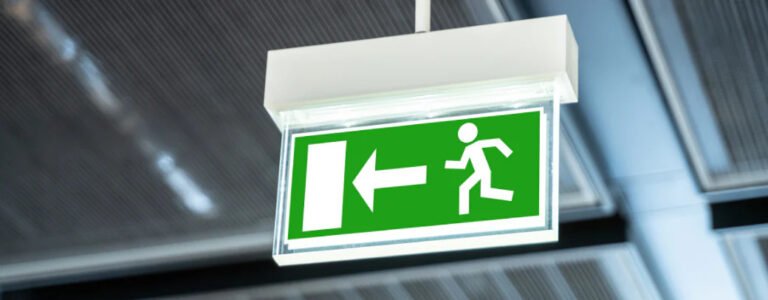Keeping your lawn and garden healthy and beautiful can be tedious and time-consuming. An automatic sprinkler system lets you enjoy the convenience of having perfectly watered plants without the hassle of watering by hand. An automatic sprinkler system comprises several components that work together to deliver water where it needs to go for lawns and plants to thrive. This article will discuss how these components work together to form an efficient and effective watering system that saves precious time, money and water while providing your yard and garden with the perfect amount of moisture.
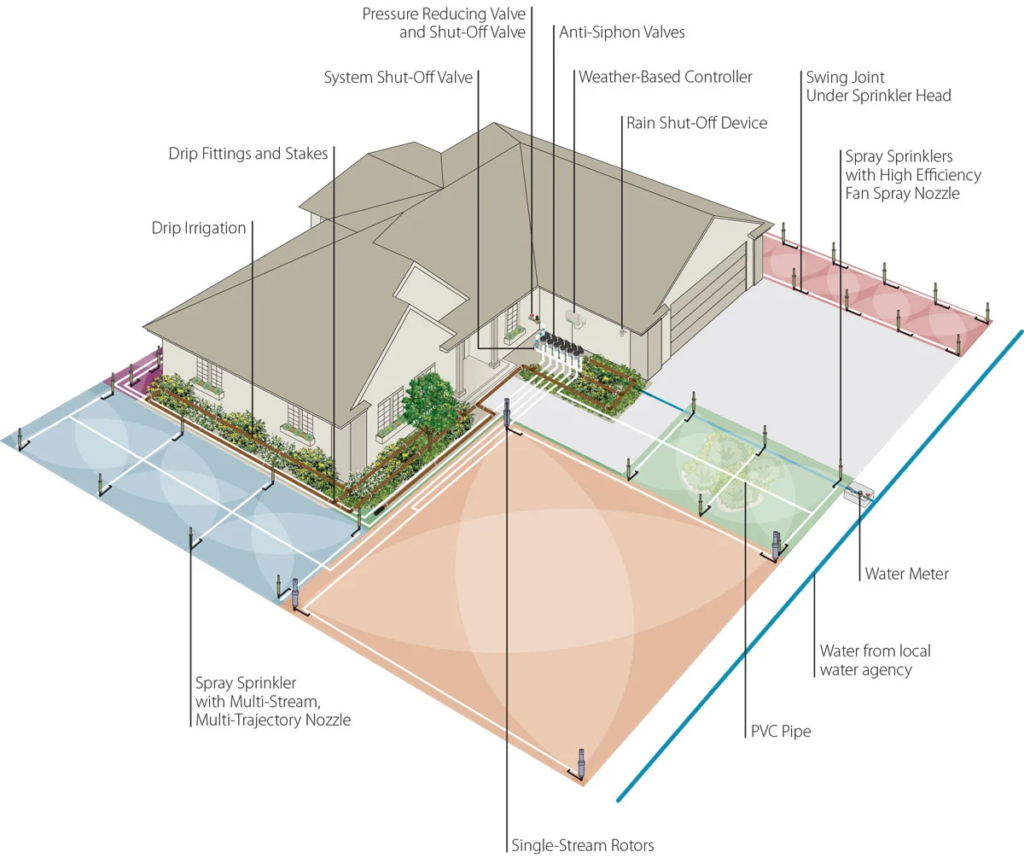
You may only really think about your irrigation system if you wake up to the sight of sprinklers watering your lawn. After all, if it’s working properly, your automatic sprinkler system should be a “set it and forget it” feature of your home. But have you ever considered how your sprinkler system works? Where does your water come from and how does it get to your home, and, ultimately, on your lawn? Water may be delivered to your home from a municipal water supply or pumped from a well on your property. In most cases, the water for the homes in your neighborhood is delivered through a large-capacity water main.From the water main, a smaller capacity supply line connects to your home, where a water meter is installed to record the number of gallons flowing through this pipe and into your home. Your irrigation system connects to the water supply in your home.Next, a system shutoff valve is installed that allows you to turn off the water supply to your irrigation system without affecting the water supply to your home. This is needed, for example, when repairing a sprinkler system component under pressure or in case of an emergency. Local building codes require a backflow prevention device to prevent accidental contamination by preventing irrigation water from draining into the main supply line. This can be a standalone backflow prevention device or valves with a built-in backflow prevention feature.After the water flows through the backflow prevention device, it is held under pressure behind the sprinkler system valve. Then, the irrigation controller sends a low-voltage electrical signal to the valve, allowing water to flow through to the active zone, allowing the sprinkler heads to water your lawn. Then the controller turns off the active zone, cycles to the next zone, and repeats the process until your entire lawn has been watered.
Fires are extinguished or controlled by automatic sprinkler systems, which discharge water locally. Heat sensitive components made of soldered links or glass bulbs holding oil-based liquids are used to detect mechanically. The thermal element holds a stopper in place, preventing water from flowing from the sprinkler head. The thermal components respond to localized heating, releasing the clog and allowing water to flow.
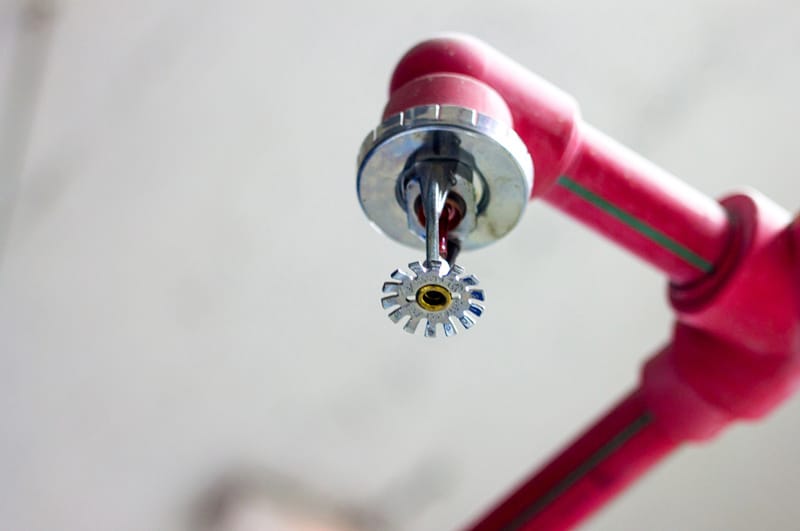
Key details concerning their functioning include:
Automatic sprinklers normally only function where a fire occurs, leaving surrounding rooms or regions undisturbed. Discharge in the presence of fire is quite dependable (98 to 99.8%), but discharge in the absence of fire is unusual. They have an 80-95% chance of being successful. When fire danger grows, so do costs and design complexity. Offices with reduced risk have a lower water consumption than high-bay warehousing, which requires sprinklers to function at a greater water demand. Systems may be constructed to conceal pipes, and the availability of attractive sprinkler heads allows them to be coordinated with the interior design. An automated sprinkler system comprises water supply (tank, pump, and valves) and sprinkler installation (pipes and heads). The design standards are mostly based on the building’s occupancy hazard classification. The requirements include head spacing measurements, expected area of maximum operation (the number of heads in use), design density (water discharge), water supply time, and tank volume
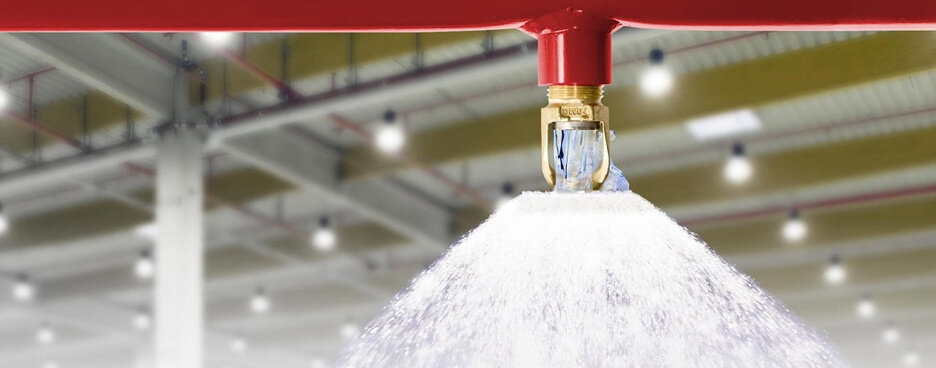
Automatic sprinkler system design
- The maximum area of coverage per sprinkler head depends on hazard classification and sprinkler mounting orientation
- Design density is the water discharge required in liters per minute over the assumed area of maximum operation. This can be summarised as the flow of water required which increases proportionally with the occupancy risk category;
- Area of operation is the design assumption for the maximum area over which the sprinklers will operate in a fire delivering the design density. This addresses the nature of the fire risk and recognizes that some fires will grow faster than others;
- Water supplies are required to be capable of supplying the required flow (depending on the system design) for a minimum duration that varies from 30 to 90 minutes depending on the hazard classification
- The minimum water volume requirement (water tank size) also depends on the hazard classification and the system type (wet, pre-action, or dry).
Alternative systems
Automatic sprinkler system designs can be adapted to suit a specific fire safety objective. Sprinklers are typically installed throughout a building, whereas drenchers are placed to address a specific risk such as on glazing as an alternative to fire-rated glass, or on a structure as an alternative to passive fire protection. The principle was applied at a Hong Kong Air Cargo Handling Facility where hollow structural members were water-cooled internally to reduce maintenance requirements and costs associated with passive fire protection. The design was justified using fire engineering methodologies.
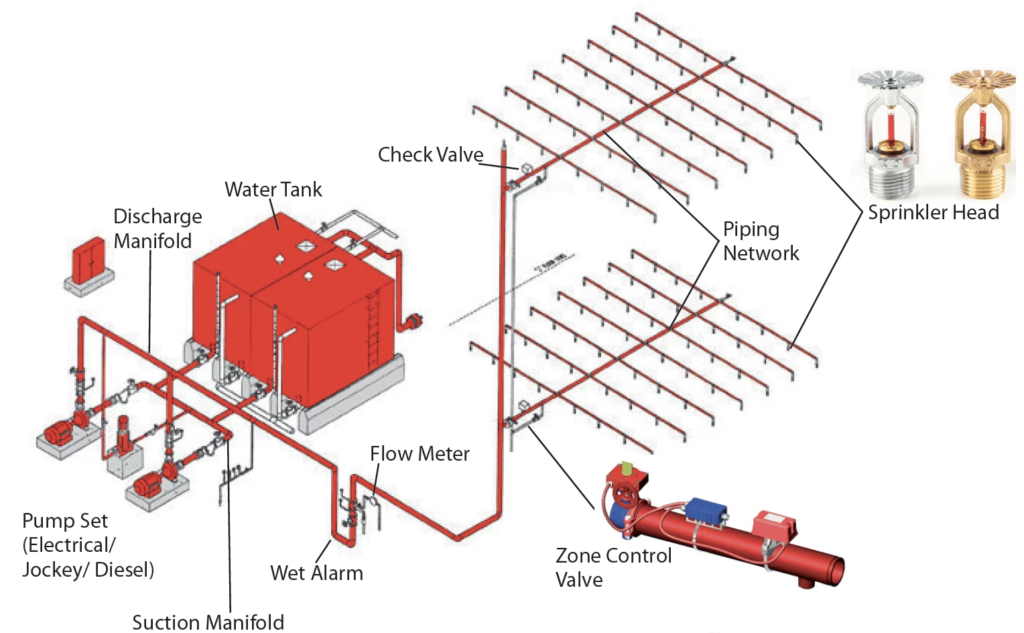
How the Controller Automates your Sprinkler System
Except for the initial programming, the controller requires little to no attention. The controller, or timer, is the “brain” of your irrigation system, telling the valves when and how much water to release into each zone. Controllers come in various sizes, from small residential types that typically control 4 to 12 zones, to large commercial systems that can monitor hundreds of zones. Some controllers are operated by a timer, while others are connected to a weather station or have moisture sensors installed in the soil. Modern “smart” controllers, like the Rain Bird ARC Series WiFi Smart Controller, make it easier to program and monitor your sprinkler system using an app on your smartphone.


